MARKETING
The Top 5 Soft Skills SEOs Should Develop

The author’s views are entirely his or her own (excluding the unlikely event of hypnosis) and may not always reflect the views of Moz.
When it comes to SEO, especially technical SEO, we often talk about the importance of hard skills. And while there’s no doubt that vlookup and regex can be your best friends, there are some essential soft skills to learn that will help you excel in your role and progress in your career.
But first, let’s look at the definition of what we actually mean by soft skills.
What are soft skills?
Soft skills are abilities that allow a person to communicate and work with others effectively and harmoniously.
Whether you’re a content or technical SEO, in-house or agency, your soft skills will help you navigate any work environment and process. That’s because in any role, even in tech roles, we are still working with other human beings. Not to mention that SEO is mostly a cross-functional team effort, which means you’ll need to be comfortable interacting with your stakeholders.
And if you are an SEO at management level, you might find that there are even trickier interactions to have with your leadership. Especially if you are responsible to get sign-off on your organic strategies and projects.
I’m going to share five soft skills today that you can start focusing on in order to improve how you engage with your team members, stakeholders, and leadership, thus helping you progress in your career and generate success.
Five soft skills for SEO success
1. Empathy
Empathy is the ability to sense other people’s emotions, coupled with the ability to imagine what someone else might be thinking or feeling. According to recent research, empathy is the most important skill in leadership. But why is it important for SEOs?
Well, the reason why empathy is the number one skill for leadership is because it helps you build better, more meaningful relationships with and a good understanding of the people you work with. This is essential for SEOs who work across several different functions and engage with a variety of stakeholders on a daily basis. Empathy will help to successfully engage in and resolve conflict, which improves productivity, collaboration and drives better results.
The best way to improve empathy is to examine your own biases and observe how you interact with the people around you. Focus on how you interact and engage with people who have a different point of view from yours. This is not about the logical reasoning behind anyone’s opinion, but more to see if you can understand the emotions and feelings behind why someone has a different way of thinking. You don’t need to agree with someone in order to be empathetic, but you do need to focus on understanding, accepting and validating other people’s experiences.
2. Critical thinking
Critical thinking is the objective, unbiased analysis and evaluation of available facts, in order to form a judgment. It’s absolutely crucial in a space like SEO and digital marketing, as SEO is filled with opinions and occasional facts, and it can be challenging to stay objective and be aware of our own biases.
Asking (better) questions is a big part of developing critical thinking. To do so, you will need a healthy amount of curiosity and skepticism. Skepticism will help develop the habit of questioning assumptions, and improve the practice of reasoning through logic, while curiosity will prompt you to seek out diversity of thoughts. You also want to improve your research skills by looking at the credibility of your sources and actively seeking out the opinions that are different from yours.
This is by no means an easy thing to do. It requires time and energy to go out of your way to do research, ask questions, and respectfully engage with views and experiences that are different from yours.
This skill is useful when reviewing any SEO opinions, analyzing data, reviewing search engine guidelines and algorithms. It can also be extremely helpful when presenting to stakeholders or decision-makers. Critical thinking can help keep your confirmation bias in check, and prepare to deal with concerns and objections. For more tips on improving your own critical thinking check out this article by Harvard Business Review.
3. Proactive listening
Proactive or active listening means that you attentively listen to whoever is speaking to you. It requires you to absorb what is being said, and to listen with the goal to fully understand what the speaker is communicating to you.
Now, you might’ve guessed, but proactive listening is actually an essential part of both developing empathy and critical thinking. And it’s important to not confuse listening to someone with hearing what someone is saying to you. Especially because when we talk about proactive listening, it means more than just absorbing the words being said. It’s not just about what is being communicated, but also how it’s done. Pay attention to body language and tone of voice in order to fully understand the other person.
You can improve this skill by first of all, being more conscious and more present when someone is talking to you. Create mental notes of the conversation. You can imagine to use labels to better grasp how the other person might be feeling. Are they excited, worried or indifferent? Proactive listening will help you understand your stakeholders, team members and leadership better, and set the foundation to our next soft skill.
4. Clear communication
Clear communication is the effective use of verbal and non-verbal communication in order to successfully exchange and explain thoughts and ideas. The goal of the communicator is to make sure that the content communicated is fully understood by their audience.
Clear communication is not to convince someone about your truth. It’s to help others understand the intended message. The reason why this is important to emphasize is because we often think that if someone rejects our idea, we haven’t communicated our proposition clearly. While that is a possibility, this is not a correlation. Unclear communication can lead to rejection just as much as clear communication and vica versa.
When you are trying to improve this skill, focus on improving how well your audience understands your message. The essentials of clear communication are therefore; a good understanding of your audience and their needs, the use of the right language and examples, and a clear message. You can further improve this by actively seeking and listening to feedback from your audience and improve your communication skills accordingly.
5. Storytelling
Storytelling is the act of sharing a story. Sounds simple, right? We all tell stories. We share our personal stories such as memorable events from our lives. Something we’ve seen, heard or experienced. We also share stories about what we aspire to achieve, or around something we fear. Stories help us make sense of the world, and it lets us share information in a way that creates emotional connections.
But why did I include storytelling on this list, if we all know how to do it? Well, it’s because we also need to learn how to use it in the workplace in order to achieve success.
Let’s break this down. Stories help us make sense of the world, which means a story could help communicate a clear message even about the most complex subject. So, if you want your non-SEO audience to understand the difference between crawling and indexation, you can tell an analogy about how search engines are like librarians and the database behind a search engine is like a library. Analogies are a great form of storytelling to help explain unfamiliar things with something familiar.
Stories also help build emotional connections, so using them in business can help you create trust with stakeholders and leadership, which is essential to get buy-in and achieve success.

It takes practice to find what narrative works well for your audience and to develop your own storytelling style. The good thing is that each of these skills build on each other, and you can totally focus on developing them at the same time.
In summary
When it comes to SEO, developing these five soft skills will help you be more successful in:
-
Building better relationships with a variety of stakeholders, as well as better-functioning teams.
-
Successfully presenting to and getting buy-in from leadership.
-
Improving productivity in cross-functional projects.
-
Deeper, and more factual, understandings of Google algorithms for non-SEOs.
-
Improving your understanding of “the big picture”, and high-level connections between SEO and other business functions.
Building your soft skills can be hard, and there’s no tangible certification to say you’ve mastered them. It takes practice and consistency and — just like SEO — it’s never fully finished. It’s a mindset that inspires to do the work day-to-day and motivates to continuously develop your skill set.
MARKETING
YouTube Ad Specs, Sizes, and Examples [2024 Update]
![YouTube Ad Specs, Sizes, and Examples [2024 Update] YouTube Ad Specs, Sizes, and Examples](https://articles.entireweb.com/wp-content/uploads/2024/06/YouTube-Ad-Specs-Sizes-and-Examples.jpg)
Introduction
With billions of users each month, YouTube is the world’s second largest search engine and top website for video content. This makes it a great place for advertising. To succeed, advertisers need to follow the correct YouTube ad specifications. These rules help your ad reach more viewers, increasing the chance of gaining new customers and boosting brand awareness.
Types of YouTube Ads
Video Ads
- Description: These play before, during, or after a YouTube video on computers or mobile devices.
- Types:
- In-stream ads: Can be skippable or non-skippable.
- Bumper ads: Non-skippable, short ads that play before, during, or after a video.
Display Ads
- Description: These appear in different spots on YouTube and usually use text or static images.
- Note: YouTube does not support display image ads directly on its app, but these can be targeted to YouTube.com through Google Display Network (GDN).
Companion Banners
- Description: Appears to the right of the YouTube player on desktop.
- Requirement: Must be purchased alongside In-stream ads, Bumper ads, or In-feed ads.
In-feed Ads
- Description: Resemble videos with images, headlines, and text. They link to a public or unlisted YouTube video.
Outstream Ads
- Description: Mobile-only video ads that play outside of YouTube, on websites and apps within the Google video partner network.
Masthead Ads
- Description: Premium, high-visibility banner ads displayed at the top of the YouTube homepage for both desktop and mobile users.
YouTube Ad Specs by Type
Skippable In-stream Video Ads
- Placement: Before, during, or after a YouTube video.
- Resolution:
- Horizontal: 1920 x 1080px
- Vertical: 1080 x 1920px
- Square: 1080 x 1080px
- Aspect Ratio:
- Horizontal: 16:9
- Vertical: 9:16
- Square: 1:1
- Length:
- Awareness: 15-20 seconds
- Consideration: 2-3 minutes
- Action: 15-20 seconds
Non-skippable In-stream Video Ads
- Description: Must be watched completely before the main video.
- Length: 15 seconds (or 20 seconds in certain markets).
- Resolution:
- Horizontal: 1920 x 1080px
- Vertical: 1080 x 1920px
- Square: 1080 x 1080px
- Aspect Ratio:
- Horizontal: 16:9
- Vertical: 9:16
- Square: 1:1
Bumper Ads
- Length: Maximum 6 seconds.
- File Format: MP4, Quicktime, AVI, ASF, Windows Media, or MPEG.
- Resolution:
- Horizontal: 640 x 360px
- Vertical: 480 x 360px
In-feed Ads
- Description: Show alongside YouTube content, like search results or the Home feed.
- Resolution:
- Horizontal: 1920 x 1080px
- Vertical: 1080 x 1920px
- Square: 1080 x 1080px
- Aspect Ratio:
- Horizontal: 16:9
- Square: 1:1
- Length:
- Awareness: 15-20 seconds
- Consideration: 2-3 minutes
- Headline/Description:
- Headline: Up to 2 lines, 40 characters per line
- Description: Up to 2 lines, 35 characters per line
Display Ads
- Description: Static images or animated media that appear on YouTube next to video suggestions, in search results, or on the homepage.
- Image Size: 300×60 pixels.
- File Type: GIF, JPG, PNG.
- File Size: Max 150KB.
- Max Animation Length: 30 seconds.
Outstream Ads
- Description: Mobile-only video ads that appear on websites and apps within the Google video partner network, not on YouTube itself.
- Logo Specs:
- Square: 1:1 (200 x 200px).
- File Type: JPG, GIF, PNG.
- Max Size: 200KB.
Masthead Ads
- Description: High-visibility ads at the top of the YouTube homepage.
- Resolution: 1920 x 1080 or higher.
- File Type: JPG or PNG (without transparency).
Conclusion
YouTube offers a variety of ad formats to reach audiences effectively in 2024. Whether you want to build brand awareness, drive conversions, or target specific demographics, YouTube provides a dynamic platform for your advertising needs. Always follow Google’s advertising policies and the technical ad specs to ensure your ads perform their best. Ready to start using YouTube ads? Contact us today to get started!
MARKETING
Why We Are Always ‘Clicking to Buy’, According to Psychologists

Amazon pillows.
MARKETING
A deeper dive into data, personalization and Copilots
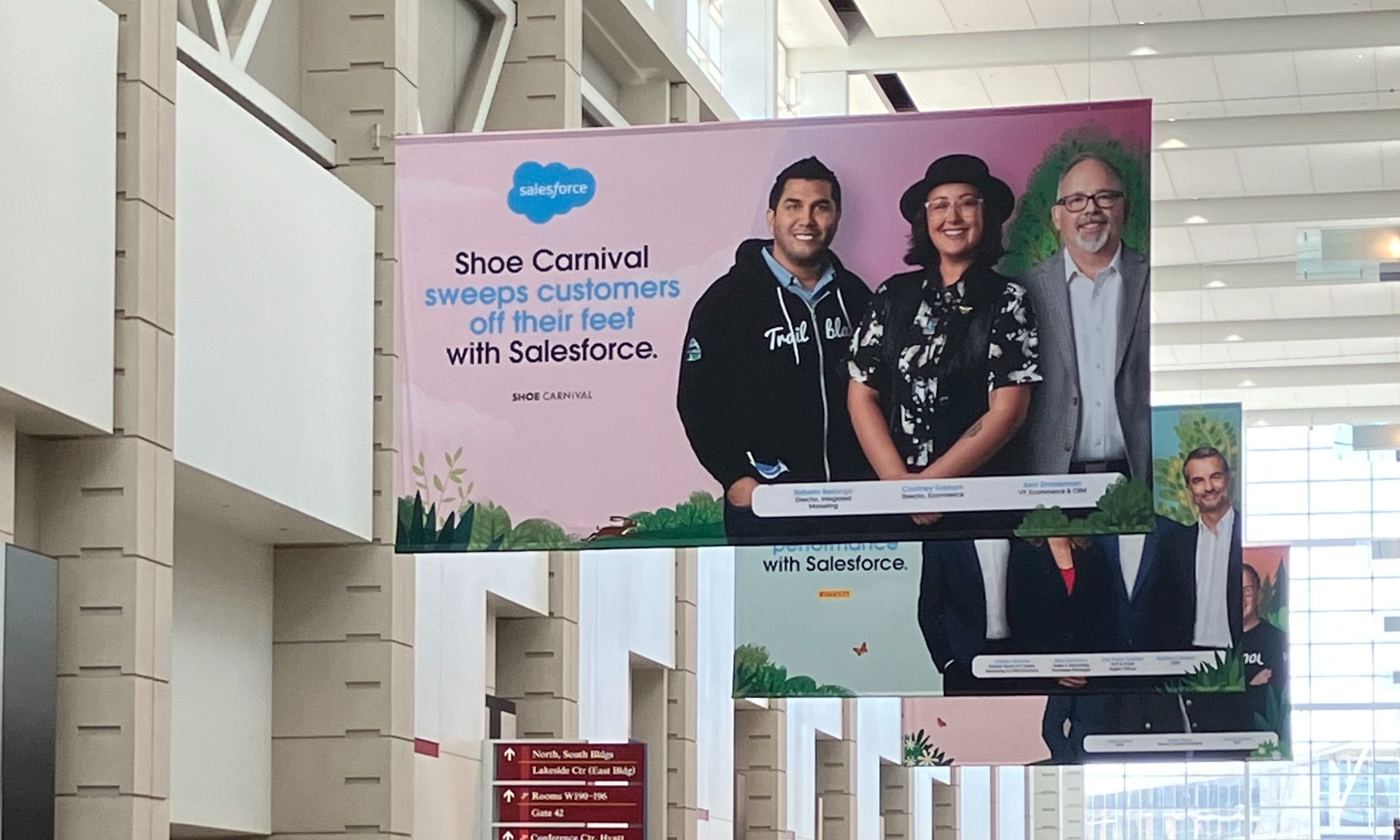
Salesforce launched a collection of new, generative AI-related products at Connections in Chicago this week. They included new Einstein Copilots for marketers and merchants and Einstein Personalization.
To better understand, not only the potential impact of the new products, but the evolving Salesforce architecture, we sat down with Bobby Jania, CMO, Marketing Cloud.
Dig deeper: Salesforce piles on the Einstein Copilots
Salesforce’s evolving architecture
It’s hard to deny that Salesforce likes coming up with new names for platforms and products (what happened to Customer 360?) and this can sometimes make the observer wonder if something is brand new, or old but with a brand new name. In particular, what exactly is Einstein 1 and how is it related to Salesforce Data Cloud?
“Data Cloud is built on the Einstein 1 platform,” Jania explained. “The Einstein 1 platform is our entire Salesforce platform and that includes products like Sales Cloud, Service Cloud — that it includes the original idea of Salesforce not just being in the cloud, but being multi-tenancy.”
Data Cloud — not an acquisition, of course — was built natively on that platform. It was the first product built on Hyperforce, Salesforce’s new cloud infrastructure architecture. “Since Data Cloud was on what we now call the Einstein 1 platform from Day One, it has always natively connected to, and been able to read anything in Sales Cloud, Service Cloud [and so on]. On top of that, we can now bring in, not only structured but unstructured data.”
That’s a significant progression from the position, several years ago, when Salesforce had stitched together a platform around various acquisitions (ExactTarget, for example) that didn’t necessarily talk to each other.
“At times, what we would do is have a kind of behind-the-scenes flow where data from one product could be moved into another product,” said Jania, “but in many of those cases the data would then be in both, whereas now the data is in Data Cloud. Tableau will run natively off Data Cloud; Commerce Cloud, Service Cloud, Marketing Cloud — they’re all going to the same operational customer profile.” They’re not copying the data from Data Cloud, Jania confirmed.
Another thing to know is tit’s possible for Salesforce customers to import their own datasets into Data Cloud. “We wanted to create a federated data model,” said Jania. “If you’re using Snowflake, for example, we more or less virtually sit on your data lake. The value we add is that we will look at all your data and help you form these operational customer profiles.”
Let’s learn more about Einstein Copilot
“Copilot means that I have an assistant with me in the tool where I need to be working that contextually knows what I am trying to do and helps me at every step of the process,” Jania said.
For marketers, this might begin with a campaign brief developed with Copilot’s assistance, the identification of an audience based on the brief, and then the development of email or other content. “What’s really cool is the idea of Einstein Studio where our customers will create actions [for Copilot] that we hadn’t even thought about.”
Here’s a key insight (back to nomenclature). We reported on Copilot for markets, Copilot for merchants, Copilot for shoppers. It turns out, however, that there is just one Copilot, Einstein Copilot, and these are use cases. “There’s just one Copilot, we just add these for a little clarity; we’re going to talk about marketing use cases, about shoppers’ use cases. These are actions for the marketing use cases we built out of the box; you can build your own.”
It’s surely going to take a little time for marketers to learn to work easily with Copilot. “There’s always time for adoption,” Jania agreed. “What is directly connected with this is, this is my ninth Connections and this one has the most hands-on training that I’ve seen since 2014 — and a lot of that is getting people using Data Cloud, using these tools rather than just being given a demo.”
What’s new about Einstein Personalization
Salesforce Einstein has been around since 2016 and many of the use cases seem to have involved personalization in various forms. What’s new?
“Einstein Personalization is a real-time decision engine and it’s going to choose next-best-action, next-best-offer. What is new is that it’s a service now that runs natively on top of Data Cloud.” A lot of real-time decision engines need their own set of data that might actually be a subset of data. “Einstein Personalization is going to look holistically at a customer and recommend a next-best-action that could be natively surfaced in Service Cloud, Sales Cloud or Marketing Cloud.”
Finally, trust
One feature of the presentations at Connections was the reassurance that, although public LLMs like ChatGPT could be selected for application to customer data, none of that data would be retained by the LLMs. Is this just a matter of written agreements? No, not just that, said Jania.
“In the Einstein Trust Layer, all of the data, when it connects to an LLM, runs through our gateway. If there was a prompt that had personally identifiable information — a credit card number, an email address — at a mimum, all that is stripped out. The LLMs do not store the output; we store the output for auditing back in Salesforce. Any output that comes back through our gateway is logged in our system; it runs through a toxicity model; and only at the end do we put PII data back into the answer. There are real pieces beyond a handshake that this data is safe.”
-

 WORDPRESS3 days ago
WORDPRESS3 days agoWordPress biz Automattic details WP Engine deal demands • The Register
-
SEARCHENGINES5 days ago
Daily Search Forum Recap: September 30, 2024
-
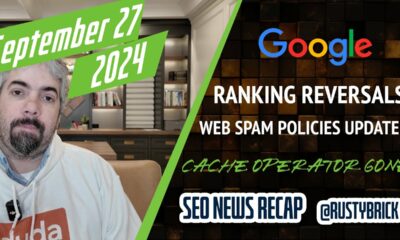
 SEARCHENGINES6 days ago
SEARCHENGINES6 days agoGoogle Volatility With Gains & Losses, Updated Web Spam Policies, Cache Gone & More Search News
-

 SEO7 days ago
SEO7 days ago6 Things You Can Do to Compete With Big Sites
-
SEARCHENGINES4 days ago
Daily Search Forum Recap: October 1, 2024
-

 SEO6 days ago
SEO6 days agoAn In-Depth Guide For Businesses
-

 AFFILIATE MARKETING6 days ago
AFFILIATE MARKETING6 days agoNvidia CEO Jensen Huang Praises Nuclear Energy to Power AI
-
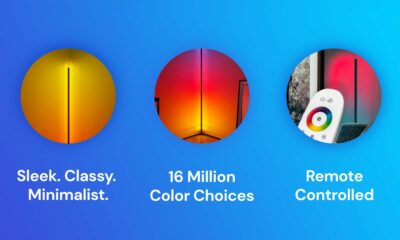
 AFFILIATE MARKETING6 days ago
AFFILIATE MARKETING6 days agoThis Minimalist Lamp Lets You Pick From 16 Million+ Lighting Colors for Maximum Productivity


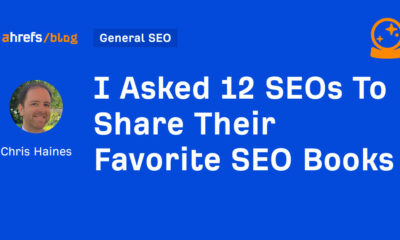





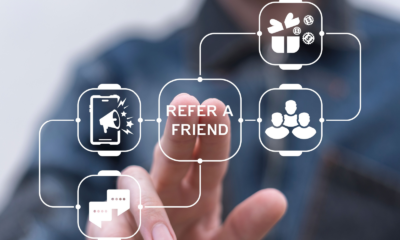

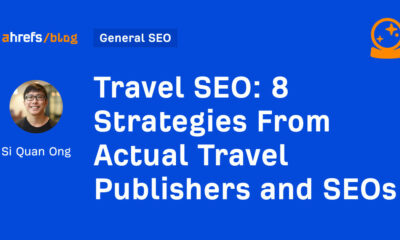




You must be logged in to post a comment Login